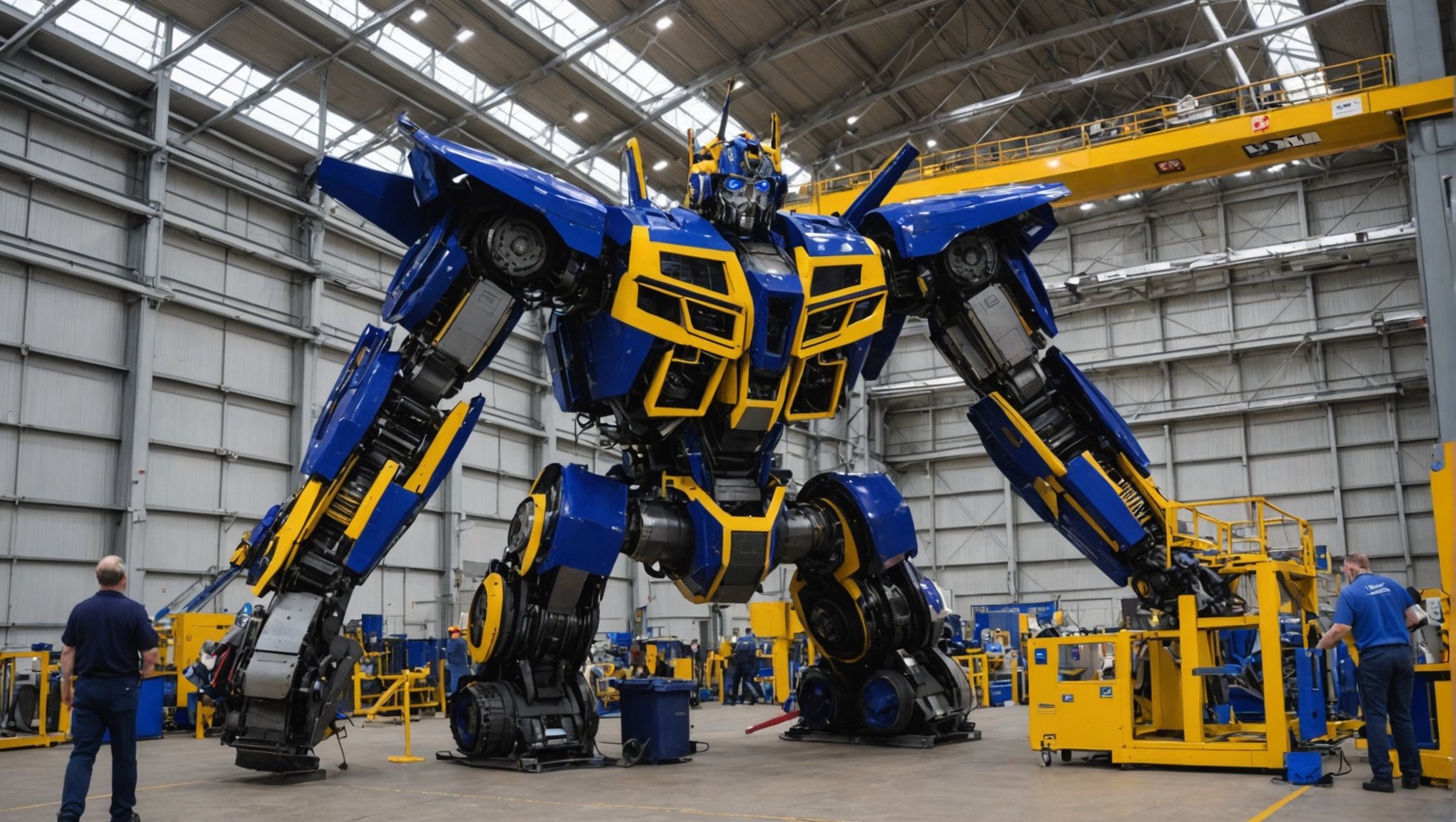Introduction to Predictive Maintenance in Aerospace
Predictive maintenance in the aerospace industry has become a transformative strategy for maintaining aircraft efficiency. It refers to the proactive monitoring and servicing of aircraft components, aiming to predict failures before they occur and thus, avoid unexpected downtimes. The importance of this approach cannot be overstated as it significantly enhances safety while reducing operational costs.
Traditional maintenance methods face several challenges, primarily due to their reactive nature. These conventional approaches often lead to excessive downtime owing to unexpected equipment failures or unnecessarily frequent checks, leading to inefficiencies. The aerospace industry requires a meticulously fine-tuned balance between safety protocols and operational effectiveness. Here is where predictive maintenance becomes invaluable.
Also to see : Unlocking the Potential: Enhancing UK Smart Grid Efficiency with AI Innovations
Enter the era of AI integration. AI technologies are now playing a pivotal role in shaping the future of predictive maintenance. By analysing vast datasets in real-time, AI systems can predict mechanical issues with high precision, mitigating risks and fine-tuning maintenance schedules. This technology overhaul not only ensures that maintenance is performed only when necessary but also anticipates potential issues well before they manifest, enhancing overall aircraft performance. Such AI-driven predictive maintenance solutions mark a significant leap forward in the aerospace sector’s quest for innovation and efficiency.
AI Technologies Transforming Predictive Maintenance
Predictive maintenance is revolutionised by artificial intelligence. Critical technologies like machine learning, deep learning, and data analytics are at the core of this transformation. Machine learning excels in recognizing patterns and anomalies in complex datasets, thus playing a pivotal role in anticipating potential equipment failures. By analysing vast amounts of historical and real-time data, deep learning algorithms can uncover trends that might be otherwise overlooked.
Also to discover : Revolutionizing Disaster Recovery: AI Strategies to Enhance Resilience for UK Enterprises
Data analytics enhances maintenance decision-making by delivering valuable insights into operational efficiency. It processes and interprets data, enabling maintenance teams to make informed decisions swiftly. For instance, predictive algorithms can forecast when a particular component is likely to fail, allowing for preemptive actions that prevent costly downtime.
In the aerospace industry, AI tools are applied extensively to improve reliability and safety. Applications include monitoring engine health, where intelligent systems analyse data to predict and prevent faults before they occur. AI-driven maintenance strategies not only extend the lifespan of aircraft components but also optimize maintenance schedules, ensuring aircraft are grounded for the shortest necessary durations.
These technologies not only reduce maintenance costs but significantly enhance operational efficiency and safety. They represent a forward-thinking approach to maintenance that other industries increasingly aim to emulate.
Current Trends in the UK Aerospace Sector
The UK aerospace industry, renowned for its technological advancements, is actively embracing modern trends such as artificial intelligence (AI) and predictive maintenance. These technologies are proving crucial in enhancing operational efficiency and reducing costs. Predictive maintenance, in particular, leverages AI to forecast when equipment will fail, allowing for timely interventions before issues emerge. In an industry where precision and safety are paramount, this proactive approach is gaining traction, signalling a tangible shift towards data-driven operations.
Regulatory changes have a significant influence on the adoption of such innovations within the UK aerospace industry. The stringent standards in aviation demand rigorous evaluation of new technologies before they can be implemented, ensuring they comply with safety and environmental regulations. This influences not only the pace of technological adoption but also encourages ongoing innovation to meet these evolving standards.
Collaboration plays a vital role in advancing predictive maintenance technologies. Many companies in the UK aerospace sector are forming strategic industry partnerships, pooling resources and expertise. These collaborative efforts facilitate research, development, and the integration of cutting-edge technologies, driving the industry forward. As these partnerships flourish, they expedite the refinement and deployment of predictive maintenance solutions, further solidifying the role of technology as the backbone of the aerospace sector’s future.
Case Studies of AI Implementation
In recent years, the UK aerospace industry has experienced significant advancements through the incorporation of AI-driven predictive maintenance. These case studies highlight how real-world applications of AI have transformed maintenance practices and led to tangible results.
One notable success story involves a major UK airline utilising AI to anticipate aircraft part failures. By implementing machine learning models, the airline could predict component failures before they occurred, reducing unplanned maintenance and flight delays. This proactive approach led to a 40% improvement in maintenance efficiency and a 30% reduction in operational costs.
Various technologies underlie these advancements. Predictive algorithms and data analysis platforms help identify patterns from vast amounts of aircraft sensor data. AI tools also incorporate natural language processing to analyse maintenance logs, uncovering hidden insights into equipment performance.
These case studies demonstrate measurable outcomes, such as improved component lifespan and reduced downtime. Moreover, AI-enhanced maintenance practices have increased safety, ensuring reliability and consistency across the fleet. Success stories elucidate the potential for AI technologies to reshape traditional maintenance paradigms, offering a framework for future innovation and efficiency in aerospace industries worldwide. As the industry continues to evolve, these pioneering efforts pave the way for broader AI integration in other sectors.
Benefits of AI-Driven Predictive Maintenance
Implementing AI in predictive maintenance offers a multitude of advantages that enhance overall operational efficiency. At the forefront of these benefits is cost efficiency, achieved through the optimization of maintenance schedules. By predicting potential failures, maintenance can be performed precisely when needed, avoiding premature or unnecessary interventions. This not only reduces the cost of replacement parts and labor but also minimizes downtime, ensuring that operational improvements are constant.
Predictive maintenance powered by AI also significantly boosts the safety and reliability of aerospace components. Through careful analysis of data and trends, AI systems can foresee impending issues, allowing for proactive solutions. This predictive capability ensures components are kept in peak condition, reducing the risk of critical failures that might otherwise jeopardize safety.
Moreover, AI-driven predictive systems facilitate enhanced resource management. By intelligently allocating maintenance resources based on actual needs rather than estimates, companies can optimize their workforce deployment and material use, fortifying their bottom line.
In sum, the incorporation of AI into maintenance practices not only fosters cost efficiency and operational improvements but also cultivates a safer and more reliable infrastructure, particularly in precision-demanding fields like aerospace.
Challenges in AI Integration
Implementing AI, particularly for predictive maintenance, presents multiple challenges. One predominant issue is the barriers to entry. Many organisations encounter obstacles such as high upfront costs and technological complexities. These barriers can dissuade companies from fully embracing AI systems, especially those with limited resources or lack of expertise.
Another significant challenge is data security. With AI requiring massive datasets for effective functioning, maintaining the privacy and integrity of sensitive data becomes paramount. Companies need to develop stringent data protection measures to prevent breaches and ensure compliance with regulations.
Furthermore, the skills gap within the workforce poses a considerable challenge. As AI technologies evolve rapidly, there is a growing need for employees with specialised skills to manage and interpret AI-driven insights. Reskilling and upskilling of existing staff become necessary to bridge this gap and enhance workforce readiness, ensuring they are prepared for the AI-driven demands.
- Prevalent AI integration challenges:
- High upfront costs
- Technological complexities
- Data privacy concerns
- Workforce skills gap
By addressing these challenges with robust strategies and dedicated resources, organisations can better navigate AI integration, maximising efficiency and maintaining competitive advantage.
Future Projections for AI in Aerospace Maintenance
In the aerospace industry, the integration of AI promises significant transformation. Industry experts predict that future trends will see AI technologies increasingly embedded in maintenance practices. These technological advancements are poised to enhance the efficiency and safety of operations dramatically. The potential for AI to predict maintenance needs before they become critical failures could revolutionise traditional strategies.
One anticipated shift involves leveraging machine learning and predictive analytics to reduce downtime and extend the lifespan of aircraft components. Such advancements might minimise unscheduled repairs, ensuring a higher operational inventory for airlines. Additionally, the evolution of AI-driven diagnostic tools is expected to streamline maintenance workflows, identifying wear and tear with greater precision.
Looking ahead, the industry outlook remains vibrant. Long-term benefits include improved maintenance scheduling and resource management, optimising costs, and boosting overall productivity. AI’s ability to handle vast data sets can facilitate proactive decision-making and efficient resource allocation. This could lead aerospace companies to refine their operational strategies, adopting a more data-driven approach that ensures reliability and performance.
Overall, the integration of AI in aerospace maintenance signifies a promising future, offering both challenges and opportunities for industry players to adapt innovatively and embrace these emerging trends.












